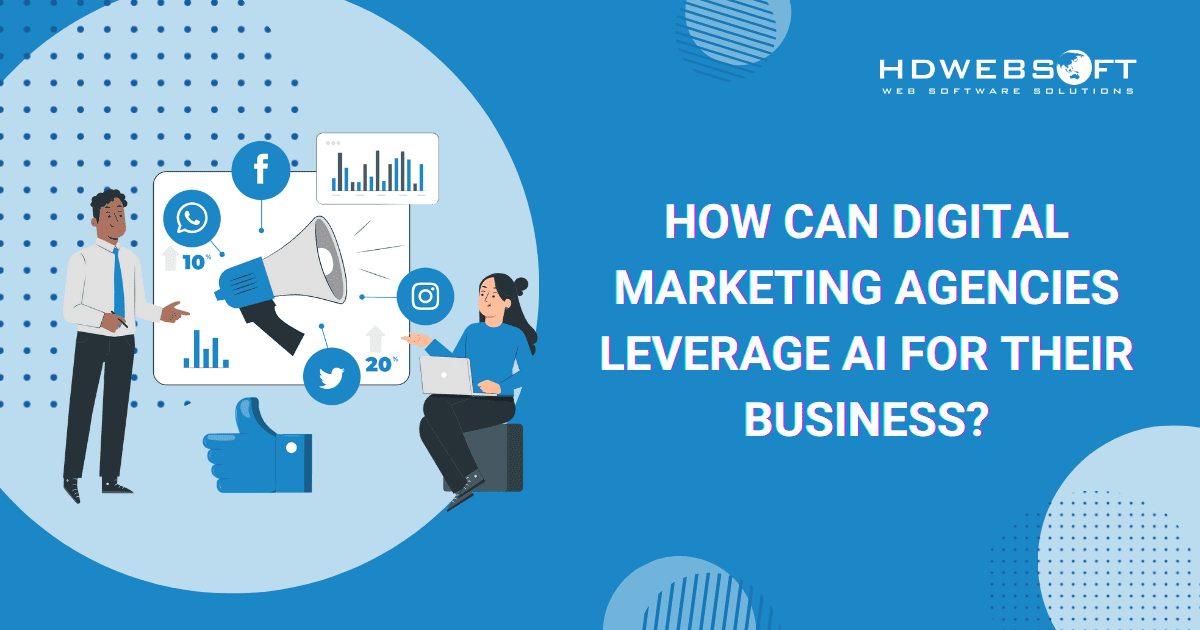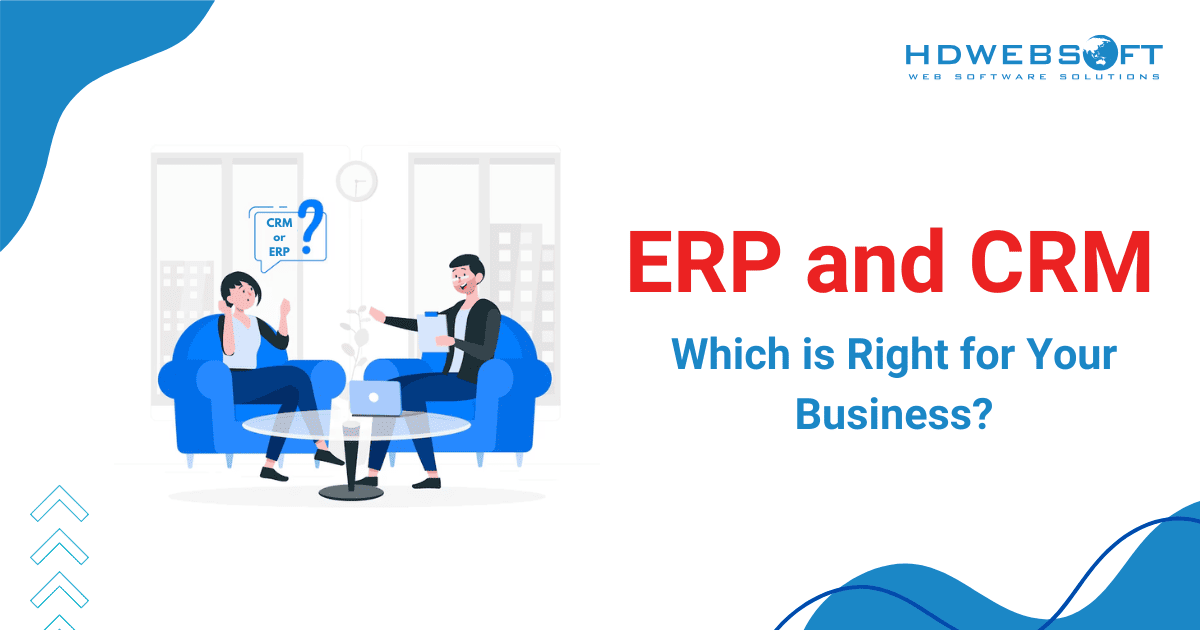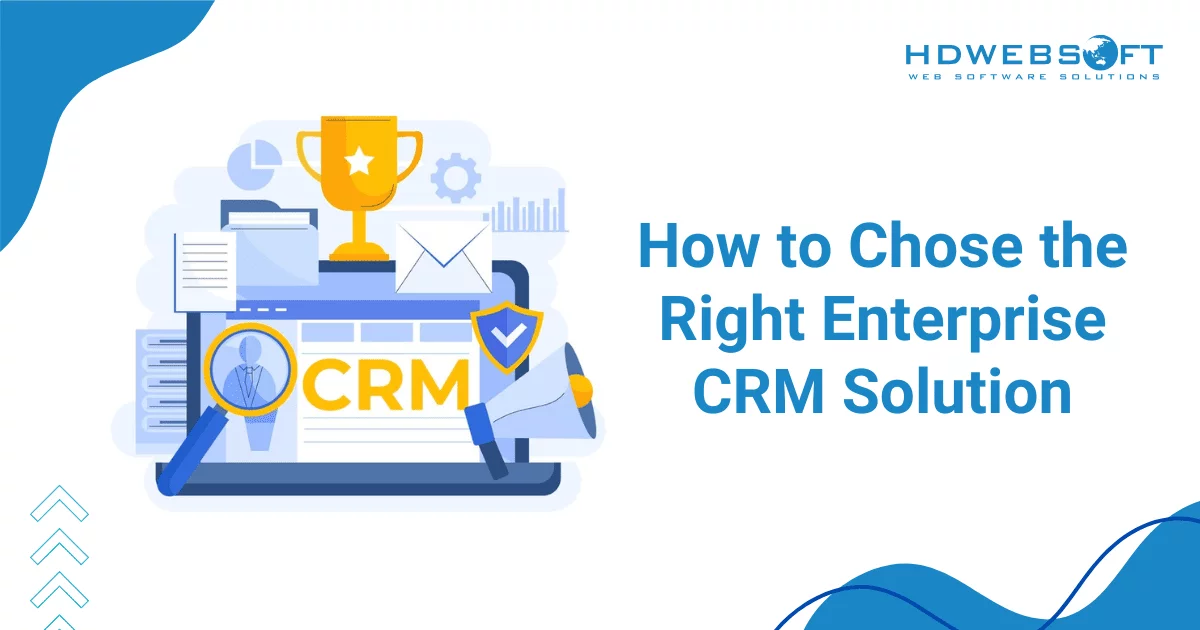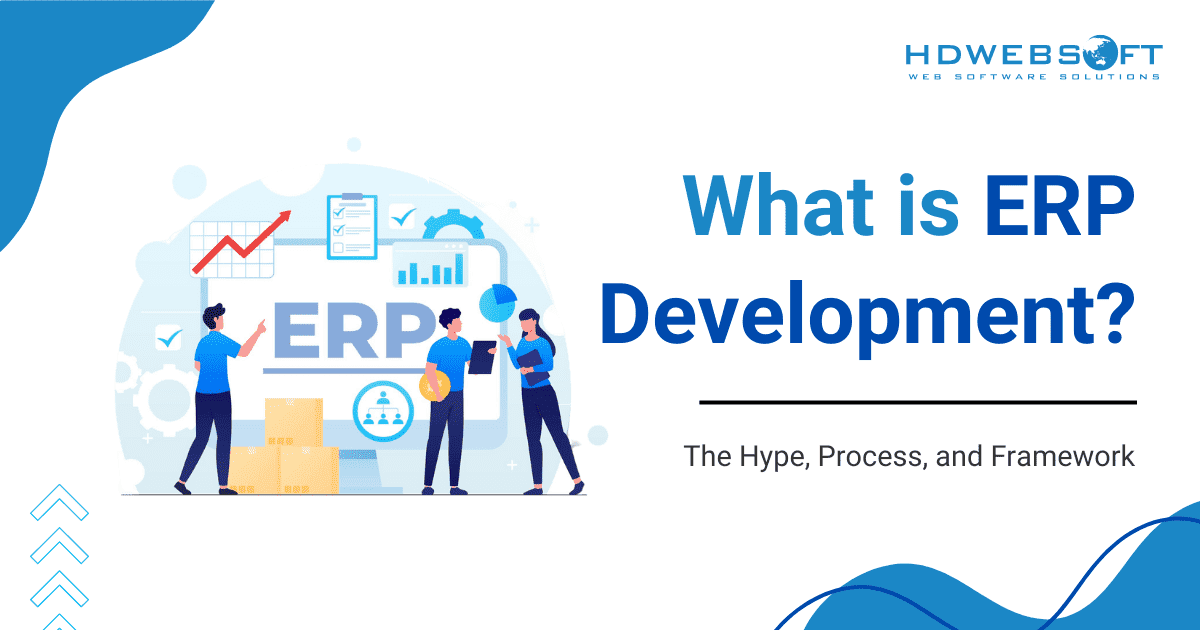
What is Enterprise Resource Planning?
Enterprise Resource Planning (ERP) systems have become indispensable for modern businesses looking to streamline operations and enhance productivity. With the increasing complexity of business processes, Enterprise Resource Planning development has emerged as a critical solution to integrate various functions into a cohesive system. This blog explores the essentials of ERP development, its rising popularity, the development process, and the best frameworks for ERP.
What is Enterprise Resource Planning development?
ERP development involves creating integrated software applications that manage and automate many of the business practices associated with a company’s operations or production aspects.
An ERP system integrates core business processes such as finance, HR, manufacturing, supply chain, services, procurement, and others into a single system. This integration provides a unified view of business operations, facilitating data-driven decision-making and enhancing overall efficiency.
What is the hype of an ERP system?
The hype around Enterprise Resource Planning is justified by its substantial impact on business performance. A recent study revealed that a substantial majority, 85%, of manufacturers and distributors rated their ERP implementations as highly successful. This statistic highlights the effectiveness of these systems in achieving business goals.
Additionally, the ERP software market is experiencing rapid growth, projected to reach $300 billion by 2027. This surge reflects the increasing reliance of businesses on integrated software solutions to optimize operations. ERP systems excel at unifying disparate business processes, improving data accuracy, and providing real-time insights. These capabilities translate to streamlined workflows, reduced costs, and enhanced customer satisfaction.
Furthermore, modern ERP systems are increasingly leveraging advanced technologies such as AI, machine learning, and the Internet of Things (IoT) to offer predictive analytics and automation, further boosting their appeal.
The Business Value of Enterprise Resource Planning
ERP deployment delivers significant business value by integrating and automating core business processes, leading to enhanced efficiency, visibility, and decision-making. Here’s how Enterprise Resource Planning systems contribute to business success:
Streamlined Operations
ERP solutions unify various business functions, such as finance, human resources, and supply chain management, into a single integrated platform. This consolidation reduces duplication of data and processes, streamlining workflows and minimizing operational inefficiencies. For instance, ERP systems automate routine tasks like invoicing and inventory management, freeing up valuable time for employees to focus on strategic activities.
Improved Data Accuracy and Accessibility
ERP systems provide a centralized data repository, ensuring that all departments have access to consistent, real-time information. This reduces errors caused by manual data entry and disparate systems, leading to more accurate reporting and forecasting. Enhanced data visibility helps managers make informed decisions based on comprehensive insights rather than incomplete or outdated information.
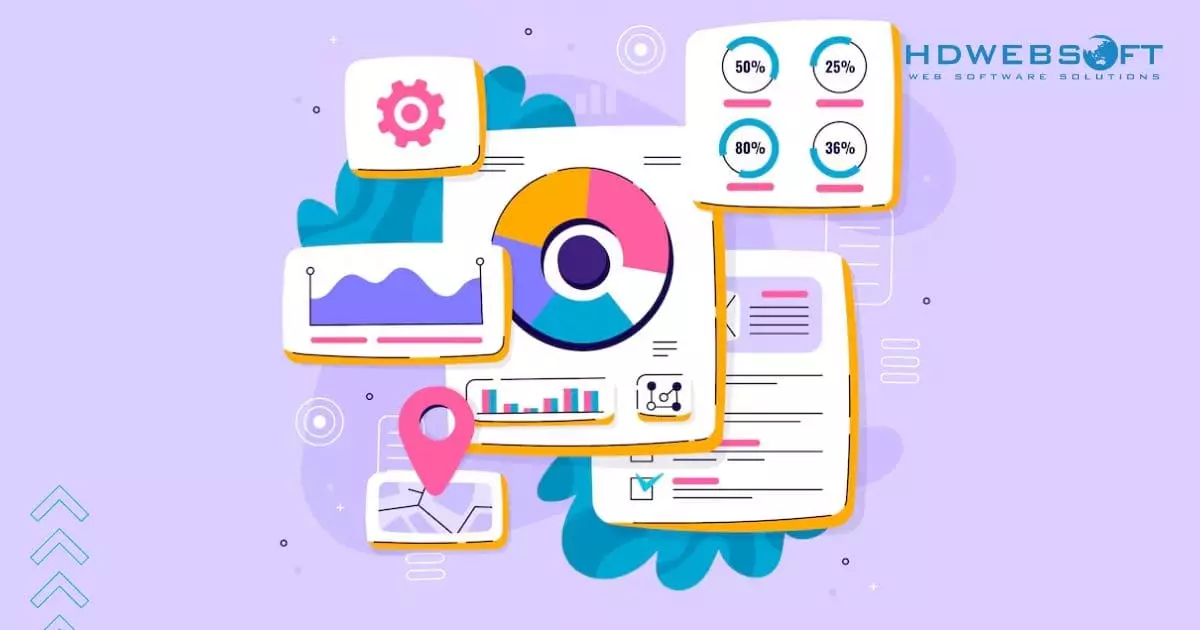
Enterprise Resource Planning offers a secure, accurate, and accessible data system.
Enhanced Decision-Making
With integrated analytics and reporting tools, ERP deployment offers valuable insights into business performance. Managers can access real-time data and generate reports on key metrics such as sales, expenses, and inventory levels. This capability supports better decision-making by identifying trends, spotting issues early, and evaluating the impact of various business strategies.
Increased Efficiency and Productivity
Enterprise Resource Planning automates and optimizes various business processes, leading to increased operational efficiency. For example, automated workflows in procurement or HR reduce manual intervention and speed up transaction times. This efficiency boosts productivity and enhances customer satisfaction by improving service delivery and response times.
Scalability and Growth
ERP solutions are designed to scale with business growth. As organizations expand, ERP solutions can be upgraded or customized to handle increased transaction volumes, additional business functions, or new geographic regions. This scalability ensures that businesses can continue to operate smoothly and efficiently as they grow.
Enterprise Resource Planning development drives business growth.
ERP Development Process
The Enterprise Resource Planning development process is a multi-faceted and comprehensive journey that involves integrating various business processes into a unified system. This intricate process typically unfolds through several key phases, each critical to the successful implementation and operation of an ERP system.
Requirement Analysis
Requirement analysis is the foundational phase of Enterprise Resource Planning implementation. During this phase, a thorough understanding of the business’s specific needs and workflows is established. Stakeholders from different departments come together to delineate the ERP system’s scope, objectives, and expectations.
Detailed discussions and analyses are conducted to gather information about existing processes, pain points, and the desired outcomes of the new system. This phase is crucial because it sets the direction for the entire project. Inaccurate or incomplete requirements can lead to significant challenges later in the development process.
Design
Once the requirements are clearly defined, the next step is to design the system. In this stage, the information gathered is translated into a detailed blueprint for the ERP system, which includes the system architecture, user interfaces, data models, and process flows.
The design phase also involves selecting the appropriate technologies and frameworks for the ERP integration process. It must be robust enough to handle current business needs while being flexible enough to accommodate future growth and changes. This phase is collaborative, involving input from system architects, business analysts, and end-users to ensure the design aligns with business objectives.
Development
Once the design is finalized, the development phase kicks off. This is where the actual coding and building of the Enterprise Resource Planning system take place. Developers work on creating the various modules and components defined in the design phase. Each module corresponds to a specific business function, such as finance, human resources, inventory management, or sales.
During the development phase, clear communication between developers and stakeholders is essential to ensure that the system being built meets the initial requirements. Modern ERP systems often leverage modular and scalable architectures, allowing different parts of the system to be developed and tested independently before integration.
Testing
Testing is a critical phase in the ERP process. It is conducted to ensure that the ERP system functions correctly and meets the predefined requirements. Rigorous testing helps identify and fix issues before the system goes live, reducing the risk of disruptions during operation. This phase includes several types of testing,
- Unit Testing: Testing individual components or modules for correctness.
- Integration Testing: Ensuring that different modules work together as intended.
- System Testing: Validating the complete system’s functionality against the requirements.
- User Acceptance Testing (UAT): Allowing end-users to test the system to ensure it meets their needs and expectations.
Deployment
After successful testing, the Enterprise Resource Planning system is ready for deployment. This phase involves moving the ERP solution from the development environment to the live environment, where it will be used by the organization. This phase may include data migration, where data from legacy systems is transferred to the new ERP system.
Furthermore, it involves configuring the system settings and preparing the infrastructure to support the ERP. Training is a vital part of the deployment phase, ensuring that end-users are familiar with the new system and can use it effectively from day one. Successful ERP system development culminates in this phase as the system moves from a theoretical concept to a tangible business tool.
An HDWEBSOFT’s successful ERP development integration.
Maintenance and Support
The final phase in the ERP implementation process is ongoing maintenance and support. This phase ensures the continued smooth operation of the ERP system after it has been deployed. It involves regular updates, patches, and enhancements to keep the system secure and efficient. Support teams are available to address any issues or questions that users may have.
Ongoing maintenance ensures that the Enterprise Resource Planning adapts to changing business needs and technological advancements, maintaining its relevance and effectiveness over time.
Best framework for Enterprise Resource Planning development
The choice of framework is a critical decision in ERP development, significantly impacting the project’s outcome. Several frameworks have emerged as leading contenders, each with its own strengths and use cases:
Odoo
Odoo is a comprehensive open-source suite that includes ERP functionalities alongside CRM, e-commerce, and other business applications. Its modular architecture allows for customization and scalability, making it suitable for businesses of all sizes. Odoo’s user-friendly interface and extensive app store contribute to its popularity.
SAP ERP
A behemoth in the enterprise software market, SAP ERP is a robust and feature-rich platform. It caters to large-scale enterprises with complex operations, offering deep industry-specific functionalities and integration capabilities. While known for its complexity, SAP ERP provides unparalleled control and customization options.
Microsoft Dynamics 365
This cloud-based Enterprise Resource Planning solution from Microsoft offers a blend of flexibility and scalability. It integrates seamlessly with other Microsoft products, making it a popular choice for organizations already invested in the Microsoft ecosystem. Dynamics 365 provides a comprehensive suite of applications, including CRM, finance, and operations, catering to diverse business needs.
Oracle ERP Cloud
Oracle ERP Cloud is another leading cloud-based ERP solution known for its scalability and performance. It offers a wide range of modules and features, catering to both small and large enterprises. Its integration capabilities with other Oracle products and its robust security features make it a strong contender in the ERP market.
Conclusion
Enterprise Resource Planning development is a critical component of modern business strategy, offering numerous benefits that drive efficiency, reduce costs, and enhance decision-making.
With the ERP market continuing to grow and evolve, businesses must carefully select the right ERP framework and follow a structured development process to realize the full potential of their ERP systems. By doing so, they can stay competitive in an increasingly complex and dynamic business landscape.








